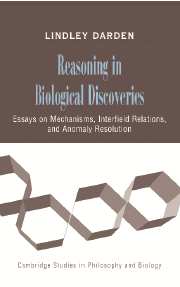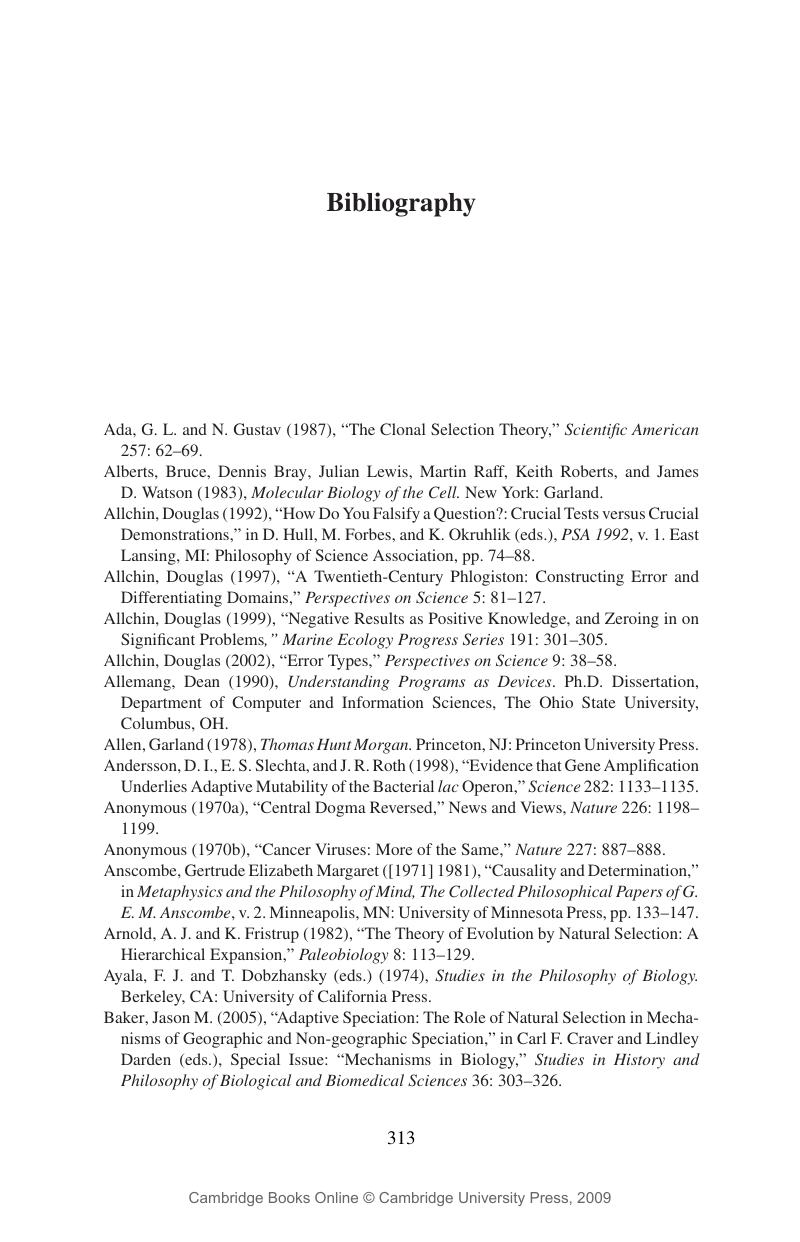 Reasoning in Biological Discoveries
Reasoning in Biological Discoveries Bibliography
Published online by Cambridge University Press: 31 August 2009
Summary

- Type
- Chapter
- Information
- Reasoning in Biological DiscoveriesEssays on Mechanisms, Interfield Relations, and Anomaly Resolution, pp. 313 - 336Publisher: Cambridge University PressPrint publication year: 2006


